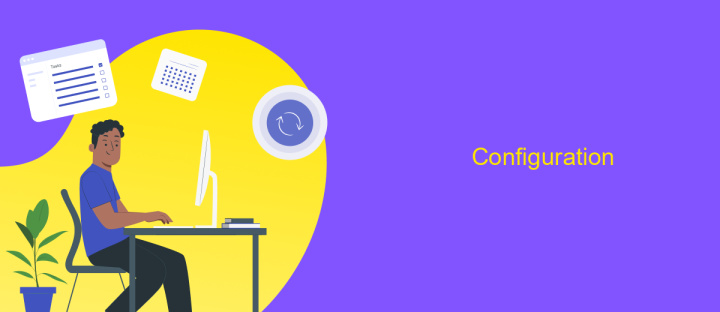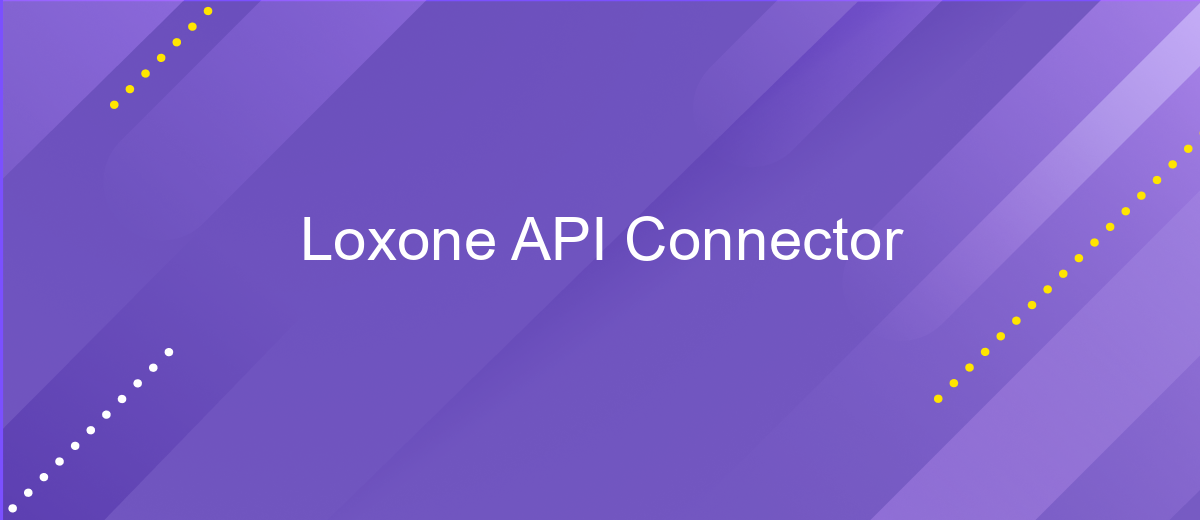Loxone API Connector
The Loxone API Connector is a powerful tool designed to seamlessly integrate and communicate with Loxone's smart home systems. By leveraging the capabilities of the Loxone API, this connector allows developers and tech enthusiasts to customize and automate their home environments efficiently. Whether you're looking to enhance energy management, security, or comfort, the Loxone API Connector provides a flexible and robust solution to meet your smart home needs.
Introduction
The Loxone API Connector is an essential tool for integrating smart home systems, enabling seamless communication between various devices and platforms. This connector serves as a bridge, allowing users to control and monitor their home automation systems efficiently. By utilizing this API, developers can create custom applications and solutions tailored to specific needs, enhancing the overall user experience and system functionality.
- Facilitates integration with third-party applications
- Enables remote control and monitoring of smart home devices
- Supports a wide range of protocols and standards
- Offers secure and reliable data transmission
- Provides extensive documentation and support for developers
With the increasing demand for smart home solutions, the Loxone API Connector stands out as a versatile and powerful tool. It not only simplifies the integration process but also ensures that users have complete control over their devices, regardless of location. As technology continues to evolve, the Loxone API Connector remains at the forefront, offering innovative solutions that cater to the ever-changing needs of modern households.
Prerequisites

Before you begin integrating the Loxone API Connector, ensure that you have a basic understanding of API concepts and how they function. Familiarity with the Loxone system is essential, including an understanding of its configuration and operation. Make sure that you have administrative access to your Loxone system, as this will be necessary for setting up API connections and managing permissions. Additionally, confirm that your system firmware is updated to the latest version to avoid compatibility issues.
To facilitate the integration process, consider using a service like ApiX-Drive, which simplifies connecting various applications and automating workflows. ApiX-Drive can help streamline the setup of your Loxone API Connector by providing user-friendly tools and interfaces, reducing the need for complex coding. Ensure you have a stable internet connection and the necessary software installed on your computer to interact with the API. Finally, gather all relevant API documentation, as this will be crucial in understanding specific endpoints and data structures required for a successful integration.
Installation

To successfully set up the Loxone API Connector, ensure you have the necessary prerequisites, including a stable internet connection and access to your Loxone Miniserver. This connector enables seamless communication between your Loxone system and other applications, enhancing automation and control capabilities. Before proceeding, verify that your Loxone Miniserver firmware is up to date to prevent compatibility issues.
- Download the Loxone API Connector package from the official website or a trusted source.
- Extract the downloaded files to a designated folder on your computer.
- Open the Loxone Config software and navigate to the 'Periphery' tab.
- Click on 'Network' and select 'Add Device' to include the API Connector.
- Follow the on-screen instructions to configure the network settings and authenticate the connection.
- Test the connection to ensure successful integration with your Loxone Miniserver.
After completing these steps, your Loxone API Connector should be fully operational, allowing you to integrate various third-party applications with ease. Regularly check for software updates to maintain optimal performance and security. Should you encounter any issues during installation, consult the official documentation or seek support from the Loxone community.
Configuration

To configure the Loxone API Connector, start by ensuring that your Loxone system is properly set up and accessible. The API Connector requires the IP address of your Loxone Miniserver and the necessary credentials to establish a secure connection. Make sure that your Miniserver is updated to the latest firmware version to ensure compatibility with the API features.
Next, access the Loxone Config software and navigate to the API settings section. Here, you will need to input the API key, which can be generated from your Loxone account settings. This key is essential for authenticating requests and ensuring secure communication between your system and the API.
- Enter the Miniserver IP address in the designated field.
- Provide the API key generated from your Loxone account.
- Set the desired data polling intervals for real-time updates.
- Save the configuration to apply the settings.
After completing these steps, test the connection to verify that the API Connector is functioning correctly. You should be able to retrieve data and control devices through the API interface. If any issues arise, consult the Loxone documentation or support for troubleshooting tips. Proper configuration ensures seamless integration and optimal performance of your smart home system.


Usage
Integrating the Loxone API Connector into your smart home system is a straightforward process that enhances automation and control. Begin by ensuring that your Loxone Miniserver is properly configured and connected to your network. Access the Loxone Config software to set up the necessary virtual inputs and outputs, which will facilitate communication between your devices and the API. This setup allows for seamless control of lighting, climate, and security systems, offering a unified smart home experience.
For those seeking an efficient way to manage and automate these integrations, consider using a service like ApiX-Drive. ApiX-Drive simplifies the connection process by providing a user-friendly interface that links Loxone with various applications and services without requiring extensive programming knowledge. By leveraging such a tool, you can automate routine tasks and enhance your home automation capabilities, ensuring that your smart home system operates smoothly and efficiently. This approach not only saves time but also maximizes the potential of your Loxone setup.
FAQ
What is Loxone API Connector used for?
How can I integrate Loxone with other applications?
Is it possible to automate tasks with Loxone API?
What are the benefits of using an API connector for Loxone?
Do I need technical skills to use Loxone API Connector?
Apix-Drive is a universal tool that will quickly streamline any workflow, freeing you from routine and possible financial losses. Try ApiX-Drive in action and see how useful it is for you personally. In the meantime, when you are setting up connections between systems, think about where you are investing your free time, because now you will have much more of it.

